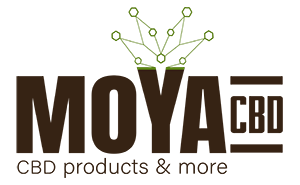It is difficult to specify exactly the time when professional athletes from various sports began using CBD while recovering from injuries and bruises involving the skeletal system and connective tissues. Today it is already clear that this is not a trend. Reduction of inflammation, rapid fracture fusion, treatment of walking fractures, expediting recovery time is significant factor in athletes choosing the right therapeutic way. Over the past few years, research has advanced on the subject and has been evidenced in countries where CBD is legal for non-athletes who experience self-treatment of CBD oil.
Anatomy:
The adult human body has 206 bones, although it is born with 270 bones. The difference was created because of the need to allow the lengthening of the body. A baby is born with small bones attached to flexible connective tissue. As the right organs grow, connective tissue disappears and small bones become larger bones. Bone tissue is the main component of the skeleton. It gives the body its shape. Bone tissue is made up of bone cells, interpolar material, and minerals.
The Human Skeleton Consists Of Two Parts:
Axial skeleton: Skull, spine, ribs, and sternum.
Appendicular skeleton: Upper limbs, lower limbs, shoulder belt, pelvic belt, facial bones. Some attach the pelvis to the axial skeleton since the “sting” bone and the coccyx bone in the spine from the back wall in the pelvic ring.
The bones of the spinal cord are built around a hollow vertical hinge called the “spine.” The spine is made up of bones called vertebrae. Inside the spine passes the neural spinal cord. Above, the skull connects to it with the help of the first link (C1) called “Atlas”. From the axial skeleton, the upper and lower limbs come out. The upper limbs are shorter and weaker. They end with the palm with which the person can perform various actions. The lower extremities end in the feet.
Bone
The bone, made of dense connective tissue, gives the body its shape, allowing vertebrates to function. The bones participate in support, movement, protection, and red and white blood cells production in the bone marrow. Bone is a hard, but light and crunchy tissue, dense on the outside and spongy on the inside – which gives lightness to movement. The bone allows the body to move and gives support to ligaments & muscles. The bones provide the necessary resistance to the skeletal muscles to work. They help the muscles maintain or change the structure of the body’s organs. In addition, they provide muscle grip sites. Bones such as the skull and ribs provide internal body organs (such as the brain and lungs) protection against external forces. The bone serves as a site for a mineral reservoir in the body. It helps maintain the balance of ions in the body, especially the calcium stores, and metabolic activity. In certain bones, there are central sites containing bone marrow in which blood cells are produced and sorted. Bone tissue is dynamic tissue.
Did You Know: Bone is destroyed and built during life in the process of replacement.
This process depends on mechanical stimuli, metabolic factors, hormonal effects, medications, and gravity. With ageing, there is more destruction than construction, so in old age, the bones break more easily, due to bone mass loss.
Osteoporosis [OP] – bone depletion
A disease of the bone in which the density of minerals decreases due to damage to the calcium and phosphorus economy, and as a result, the microarchitecture of the bone is impaired.
Bones with the disease are more exposed to fractures. Although there are methods to treat the disease, preventive treatment is still considered the most effective way to prevent fractures. Since the disease is mainly affected by the female sex hormone oestrogen, more women, especially after menopause, suffer from the disease compared to men. Other causes of the disease are other hormonal factors, very low body weight (e.g. due to anorexia), tobacco smoking, certain medications (such as steroids), and many chronic diseases (such as arthritis).
CBD as a treatment of Osteoporosis :
Important concepts:
Osteoblasts – bone builder.
Osteoclast – the bone destroyer.
Bone resorption cells are responsible for the deposition of minerals in the bones.
The equilibrium in their opposite action that occurs throughout life will determine the strength and health of the bone.
The pharmacological profile of endocannabinoids shows the presence of some long-chain fatty acid amides, some of which show a possible effect on osteoblasts and osteoclasts. In the skeleton, these fatty acids activate the central endocannabinoid CB1 receptor found at the edges of sympathetic nerve cells as well as the peripheral CB2 receptor, the GPR55 (G protein-coupled receptor), and the cation channels – TRPV, TRPA & TRPM some of which affect osteoblasts and osteoclasts.
Along with this information, it has become clear in recent years that long-chain polyunsaturated fatty acids [PUFAs] may play an important role in curbing osteoporosis and other diseases in the skeleton and bones.
Links:
Long-chain polyunsaturated fatty acids may mutually benefit both obesity and osteoporosis.
Skeletal lipidomics: Regulation of bone metabolism by fatty acid amide family.
Accelerated bone resorption by osteoclast plays a major role in the pathogenesis (causing the disease) of osteoporosis and other bone diseases. Identifying the molecular pathways that regulate osteoclastic activity provides a key for understanding the causes of these diseases and for developing new types of treatments.
Cannabinoid receptors as a target for the treatment of osteoporosis: A tale of two therapies.
Cannabinoids and the skeleton: From marijuana to reversal of bone loss.
A recent study found a high bone mass in mice treated with antagonists that inactivate CB1 receptorsץ This mouse was found to be protected from bone mass loss caused by ovariectomy. In these mice, osteoclast activity has been found to be inhibited and the production of survival factors released by these cells was also suppressed. The results of these studies also prove that the endocannabinoid system plays an important role in maintaining normal bone mass.
CBD, anandamide, and bone-building:
Further studies demonstrate the role of the endocannabinoid – anandamide in regulating bone absorption/ bone building in an experimental model in mice. The study examined the dual expression of the receptor TRPV1 and the receptors CB1 and CB2 together with the two enzymes responsible for the synthesis and catabolism of anandamide:(N-acyl phosphatidylethanolamine-hydrolyzing phospholipase D (NAPE-PLD – the enzyme that synthesizes anandamide and fatty acid amide hydrolase (FAAH) – the enzyme that breaks down anandamide. By finding new evidence about the important and reciprocal functioning between CB2 and TRPV1 in osteoporosis, it can be hypothesized that the sensitivity of the TRPV1 receptor or the increase in its improved transport/ movement, combined with the overexpression of agonists for CB2 receptors may be critical in reducing calcium intake to osteoclasts, which themselves are responsible for over-activity and higher bone absorption. Reducing the penetration of calcium ions into osteoblasts improves their function as bone-builders.
The Endovanilloid/endocannabinoid system: A new potential target for osteoporosis therapy
In mice lacking CB2R, bone mass is low and this is the only phenomenon observed in these animals. The main physiological involvement is in the remodulation (rebuilding) of the bone. In men, polymorphism of the gene encoding for CB2R is associated with osteoporosis in menopausal women. The CB1 receptor was also found to be involved. In mice lacking the CB1R, the bone mass is very high because it is not absorbed back. In such mice, fat cells accumulate in the bone marrow and there is less differentiation of cells committed to become osteoblasts. At the same time, an increase in the expression of CREB and its phosphorylation can be observed. The endocannabinoid system maintains homeostasis of minerals and cells in the bone, preventing increased osteoclastic activation, and supporting the activation of osteoblasts that form new bone tissue.
CREB -Transcription Factor (CREB, cAMP response element-binding protein is a cellular transcription factor. It binds to certain DNA sequences called cAMP response elements (CRE), thereby increasing or decreasing the transcription of the genes. Genes whose transcription is regulated by CREB include c-fos, BDNF, tyrosine hydroxylase, numerous neuropeptides (such as somatostatin, enkephalin, VGF, corticotropin-releasing hormone), and genes involved in the mammalian circadian clock (PER1, PER2).
CREB is closely related in structure and function to CREM (cAMP response element modulator) and ATF-1 (activating transcription factor-1) proteins. CREB has a well-documented role in neuronal plasticity and long-term memory formation in the brain and is integral in the formation of spatial memoryץ CREB downregulation is implicated in the pathology of Alzheimer’s disease and increasing the expression of CREB is being considered as a possible therapeutic target for AD. CREB also has a role in photoentrainment in mammals.
Summary
Alarming findings have recently been uncovered about the relationship between painkillers and sleeping pills and bone mass depletion, especially in menopausal and golden age people. Decades of daily opioid use combined with a high-fat diet and lack of exercise, can cause endocannabinoid dysfunction and hence skeletal diseases.
Want to experiment with quality CBD products?
MOYA recommends several products suitable for treating a variety of problems, it is worth taking a look at the store and learning our many products. For free advice and to select the right product for you – contact us


